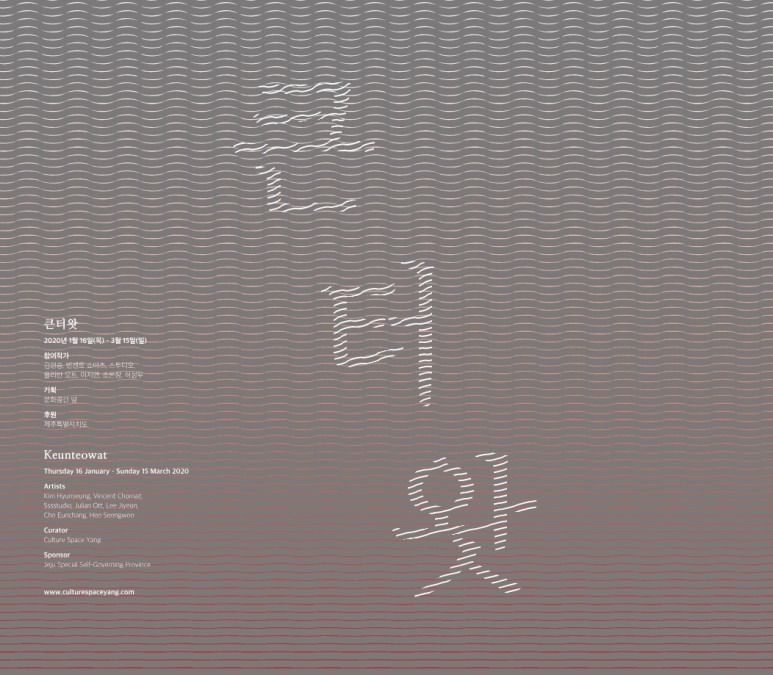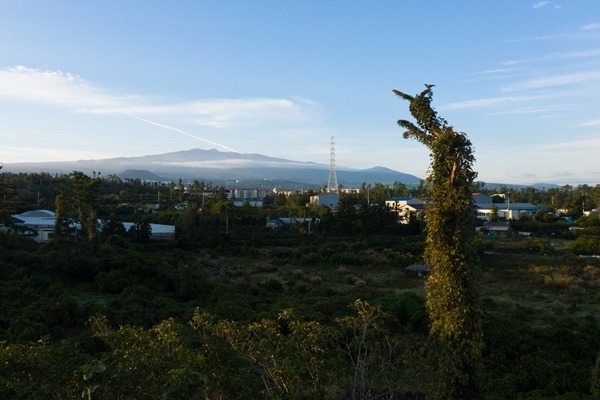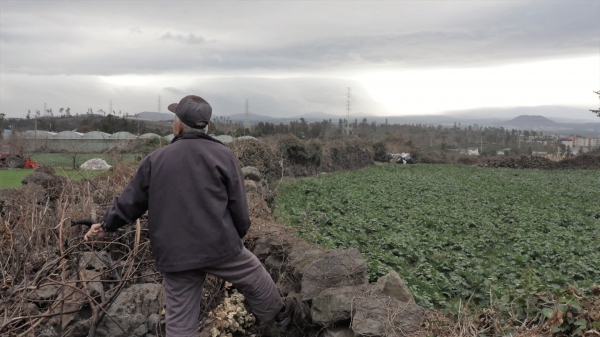
| Period| | 2020.01.16 - 2020.03.15 |
|---|---|
| Operating hours| | Thur-Sun 12:00-18:00 Mon-Wed reserve onnly 10-:00-20:00 |
| Space| | Culture Space Yang |
| Address| | 13, Georonam 6-gil, Jeju-si, Jeju-do, Republic of Korea |
| Closed| | Mon. Sun. |
| Price| | Free |
| Phone| | 064-755-2018 |
| Web site| | 홈페이지 바로가기 |
| Artist| |
김현승,빈센트 쇼마즈,스투디오,율리안 오트,조은장,허성우
|
정보수정요청



|
|
Exhibition Information




Memory beyond record Kim Beom-jin (Culture Space Yang Kwan-jang) Jeju's April 3 was once a difficult word for us to even broach, a history we tried to forget while keeping silent for a long time. We acted as if we had forgotten the April 3 in this silence, but the past could not be completely buried and never disappeared. The rough, rough days when my grandmother, grandfather, mother and father lived ahead are just a history that has passed, like a wave of waves to me. Without any memories and records of the preceding period, I can't get a glimpse of the frenzied era Memories of those days, which remain clear, are forever recorded in places such as monuments and museums, but hazy memories are scattered here and there. We want to bring all the past stories to monuments and museums, but there are traces of memories that can never bring them all. The vestiges of memory are our feelings remaining on the site, when there was a huge event that swallowed life, a hidden secret that we remember with our bodies, shivering forever like a picture. The traces of memories that I want to forget but are remembered, and that I want to hold on to, are memories of my body like scars on my life. Emotions are a force that brings back the memory of the body, and the emotions that are engraved there are more powerful than anything else. Gero Village has a memory of a body that I want to forget but I can't forget. On the day of the cold winter when the entire village was burned down by Jeju's 4-3 victory, everything disappeared with the red-hot landscape of the sky. The unspeakable grief of those who couldn't find their own place there, where only black ashes remain, is still in their eyes. The harsh sound that was heard unawares when hitting people with a spear carved from a long bamboo tree at the site of the former public hall, which is now a convenience store, still lingers in their ears. They couldn't even close their eyes because they were killed in a red-hot place if they didn't look twice at the death of an old man in the same neighborhood in an old station, which is now used as a parking lot. One old man in town said, "I can't forget what happened then. Because I've been through it with my body," he says. But there are other traces of memory, too. Villagers shared difficulties and shared a long life together in the makeshift Manpyeong site, rejoicing and grieving together. The strong will of life to continue their lives together also remained a sign of their memory. Just like a piece that has become dull through time, the memory of the body has a vivid meaning of life that we have not yet realized. The memory of Jeju's April 3 becomes closer and more vivid to us without fading over time. Listening to and capturing individual memories of the April 3 issue is always cautious, as if by reading other people’s diaries. So, recording any memory of the amount of cultural space with Gero Village is always careful and the work progresses slowly. The authors, born and raised in different times and places, were able to work with Gero Village because they shared their memories and feelings of the time in their respective ways. If the writers had only access to the Jeju 4 and 3 as a memorial and exhibition hall records, how deeply could they have shared the 4 and 3 of Gero Village? The writers lived in Gero Village for a certain period of time and listened to and listened to the memories of the villagers. And I could hear the voice of the fourth and third parts, expressed in various ways by different writers, in the amount of cultural space. The convenience store that they visited every day to buy household goods has little trace of the old synagogue, but the memories of Gero Village's 4 and 3 came from the site where they walked every day. The traces of memories about Gero Village are again revealed, resonated and spread by writers and villagers in various media. Kim Hyun Seung The stories of those who remember the big news were captured in Kim's video. One space, one event, but the remembering part was different. Different memories and perspectives were brought together to complete the whole thing. The video will be stored in the amount of cultural space and provided for anyone interested in 4.3, including visitors and researchers. Cho Eun Jang Cho has now photographed the image of the giant turwatt and the location related to 4.3 in the village of Gero. The story of the past overlaps behind the current picture of him. The gap between the story at the time of the April 3 period and the current scenery is as long as the long silent time of looking at the unfamiliar landscape of Big Turwatt without words to say. Studio Next to the site of the big turwatt's house was a factory that disposed of large waste. Standing in the big house, I can hear the sound of the machine. Studio, which will be joined by Kim Nuri and Lee Hyun-tae, recorded the sounds of each place and videotaped the scenery. The sound of a car, the sound of a machine in the factory, and the sound of birds. Vincent Shomaz Vincent Schomaz’s Past Echoes was a project that approached past events by using current sound as a medium. Participants visited the site of the old public hall and the former Manpyeong site and concentrated on the sound there. The sound not only made knowledge of what happened there, but also empathized with the pain of people who were there. Lee Ji Yeon Lee Ji-yeon painted big turwat and old man, imagining the place before the April 3 It is also a landscape that we would have seen if the April 3 event had not occurred. The longing for that time and the sadness for that time are the motivation to keep the present. Heo Sung Woo Big Thawat gave Huh a deep cry. The history of the great turquoise, remembered by the old tree, was told to Heo. And the history has become music. The composer Huh Sung-woo plays the piano, while Pyo Jin-ho plays clarinet and vocals. Pyo Jin-ho's "scat" is the language of trees that tells history. Julian Otte Julian Otte used camera-obscure techniques to photograph the site of the massacre. This place, which was called an old site, was later built by Nonghyup. And now it has become a public parking lot surrounded by factories. The light that enters a small hole in the darkened author's workroom window becomes a scene in the parking lot. The scenery of the parking lot, reflected upside down on the ceiling, walls and canvas, meets both inside and outside the building and the past and present.
